In the spring there are so many blooms and so few hours to jot down the mindless drivel that fills these pages. So, today there will be more photos, and less babbling. No purpose is served by me having these pictures stored on my computer and not sharing them. We’ll start with photos from a few weeks ago of plants that have now passed out of bloom (but are worth noting), and finish with ones from recent days in mid April.
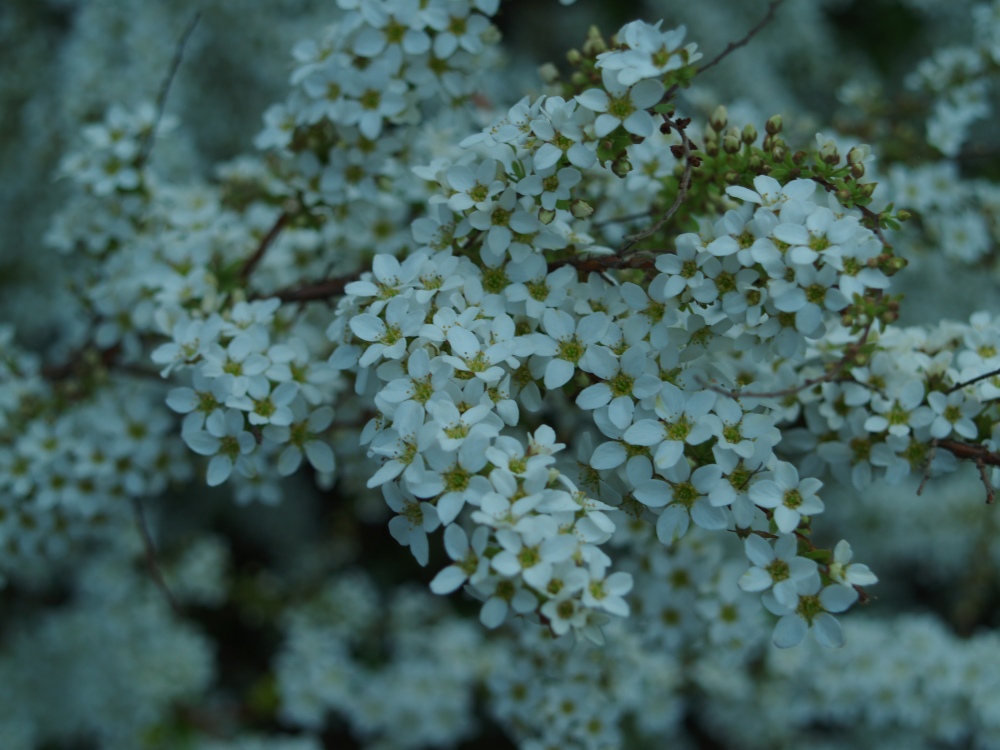 ‘Ogon’ spirea (Spiraea thunbergii ‘Ogon’, above) is a pleasant enough shrub through most of the year, though its habit becomes a bit unruly if it is not sheared back into a tight ball after flowering. I rarely prune it (or anything), so it’s behavior leaves much to be desired. The narrow, yellow leaves are almost needle-like, and these are the main attraction of ‘Ogon’, but the flowers cover the shrub in a cloud of white and are quite nice also.
‘Ogon’ spirea (Spiraea thunbergii ‘Ogon’, above) is a pleasant enough shrub through most of the year, though its habit becomes a bit unruly if it is not sheared back into a tight ball after flowering. I rarely prune it (or anything), so it’s behavior leaves much to be desired. The narrow, yellow leaves are almost needle-like, and these are the main attraction of ‘Ogon’, but the flowers cover the shrub in a cloud of white and are quite nice also.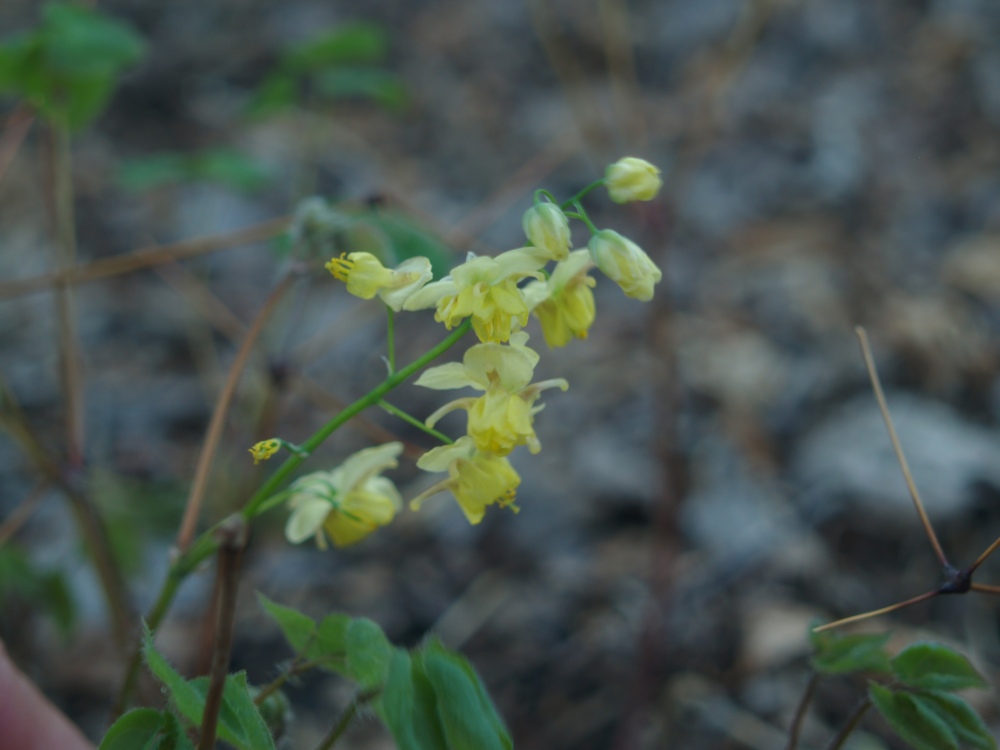
Many gardeners seem enamored by barrenworts (Epimedium x versicolor ‘Sulphureum, above, and Epimedium x rubrum, below). They are dependably deer resistant, and the arching blooms are exquisite for a week, but after flowering I forget about them for another year, so I suppose its safe to say they’re not one of my favorites. Nice, but not exceptional unless you’re fighting deer and don’t want to spray a repellent. 
A week ago I was prepared to write about the various spring flowering magnolias (Magnolia x ‘Jane’, below), but they passed a bit too quickly out of bloom and my enthusiasm waned. In any case, if you’d like, go back a year or two, or three, and I’m pretty certain you’ll find something on them each year. 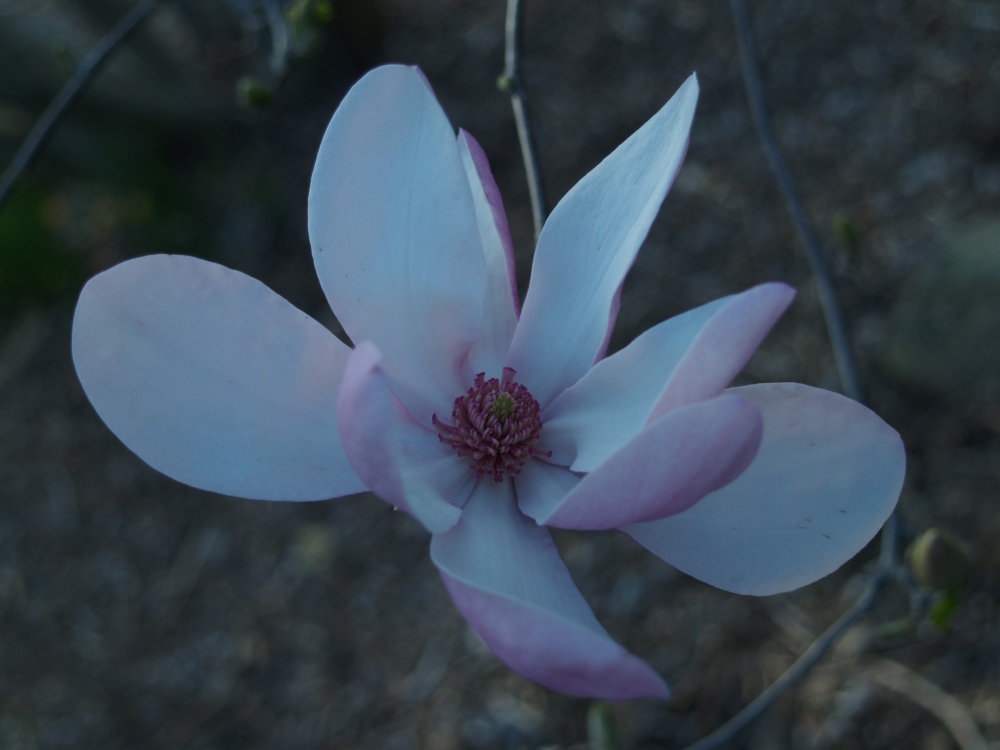
I liked the color and textural contrast of this seedling of the red leafed geranium ‘Espresso’ (Geranium maculatum ‘Espresso’) that popped up in Creeping Jenny (Lysimachia nummularia ‘Aurea’, below) that is at its brightest when it first emerges in the spring. I prefer the tough, though short flowering ‘Espresso’ to the floppy and sprawling ‘Rozanne’ that is short lived for me. ‘Espresso’ seeds itself about, though not wildly, and the seedlings are nearly as darkly colored as the parent plant.
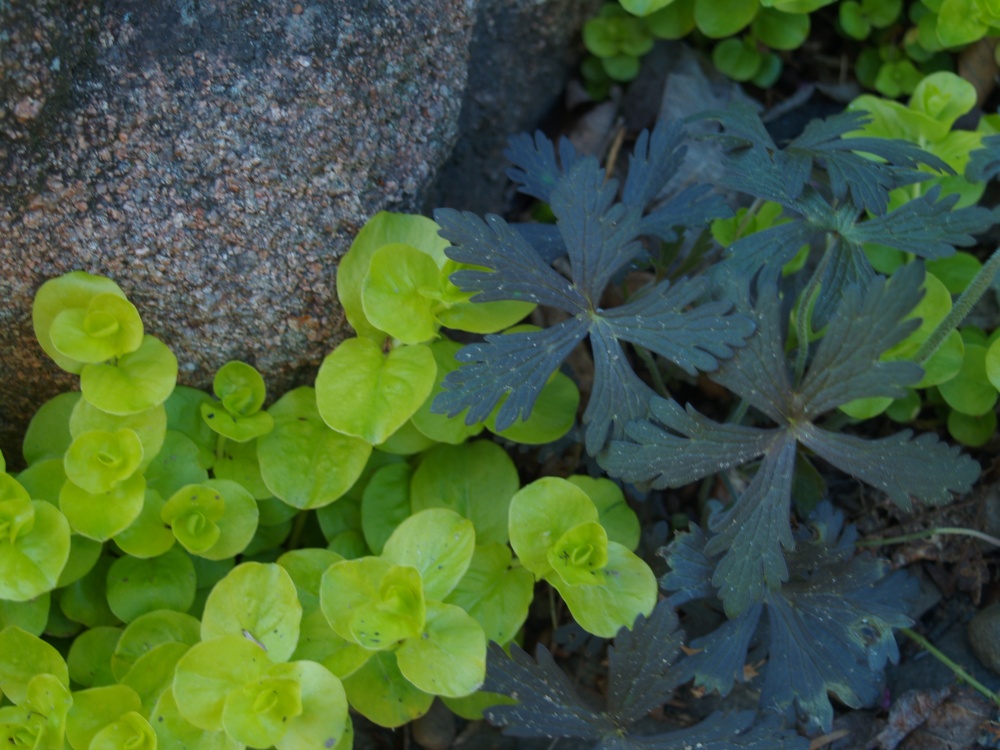
Blueberries (Vaccinium corymbosum, below) are touted these days as more than a fruit bearing shrub. The flowers are nice, as is the autumn foliage color, but if you’re not interested in eating the fruit (or feeding the birds) then there are more attractive shrubs. In years past I had ten large blueberry shrubs, and I enjoyed eating handfuls of warm fruits in early July while I wandered about the garden. But, the large blueberries declined (probably from some neglect on my part), and finally they were chopped out. The newly planted blueberries feed only the birds, who are enormously appreciative, I’m sure.
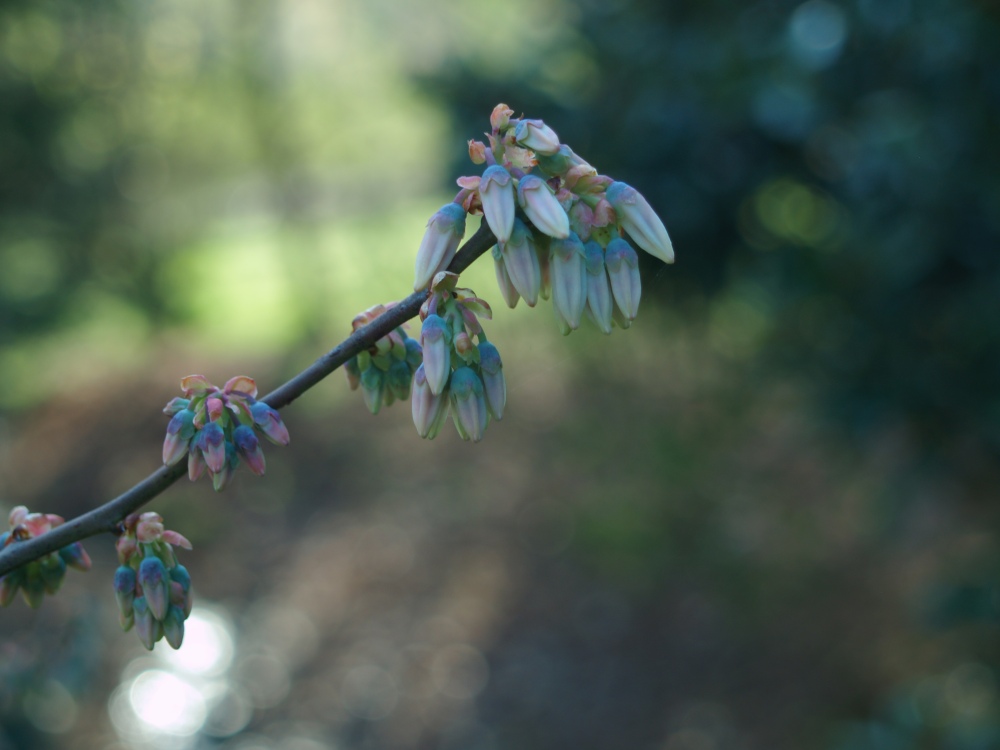
I think that long in the past I planted this purple leafed violet (below), definitely not in this spot, but somewhere. As violets do, seedlings pop up everywhere, which is okay because they only move into open spaces, and nothing is crowded out. Other types of violets grow rampant in the lawn, then fade as temperatures turn hot. I don’t mind this either. Who could be bothered by flowers in the lawn?

Thanks for the great posts. I too love violets in the lawn. Also buttercups, clover, and other things. Even the occasional dandelion is tolerated, though, for the neighbors, I try not to let them go to seed. I’ll admit I’m a fan of vaccinium; the flowers are not the showiest but at least in zone 6 there are few shrubs that can beat them for fall color and I find their winter form pleasing. Epimedium, too. I like their form even out of flower, and around here there are not many evergreen ground covers that thrive in dry shade like they do (you can only use so much pachysandra.) In zone 7 you no doubt have more options — what are your preferred ground covers for such situations?
I’ve planted a few areas under trees with periwinkle (Vinca minor) and I’ve transplanted yellow and variegated leaf mutations that have spread nicely over small areas. There are a few variegated ivies that spread slowly, but most ground covers in the garden are perennials such as Creeping Jenny, liriopes, dwarf mondo grass, and euphorbias.